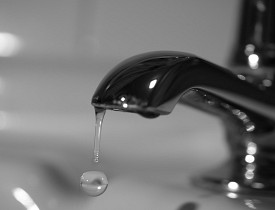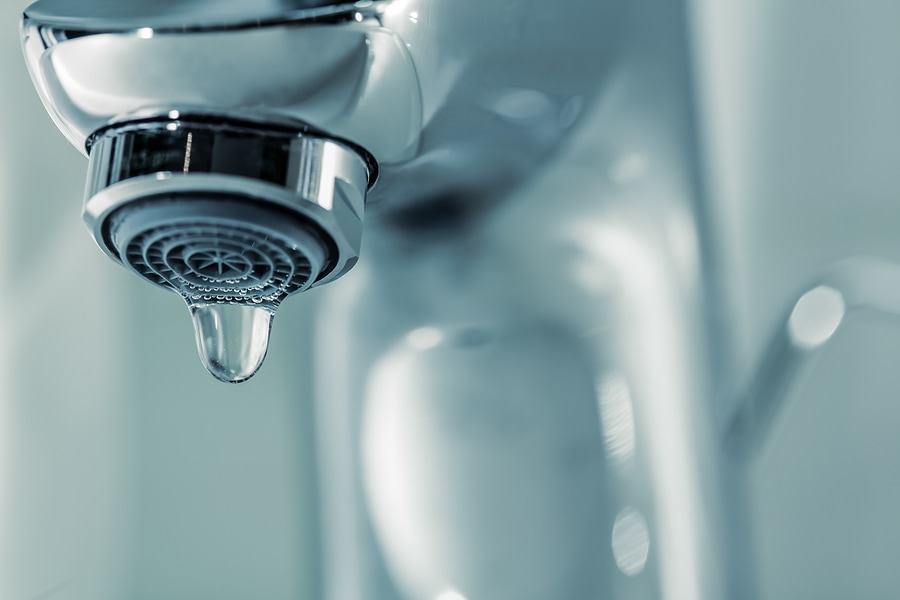How It's Required to Address a Broken Faucet
How It's Required to Address a Broken Faucet
Blog Article
Any individual seems to have their own unique rationale on the subject of Why Are My Faucets Dripping (And Can I Fix It Myself)?.

Leaking faucets may look like a minor trouble, yet their effect surpasses simply the nuisance of the sound. From wasting water to incurring unnecessary monetary costs and health risks, neglecting a dripping tap can result in numerous consequences. In this article, we'll delve into why it's vital to resolve this typical household issue promptly and effectively.
Wastefulness of Water
Ecological Impact
Trickling faucets add substantially to water wastage. According to the Environmental Protection Agency (EPA), a single faucet trickling at one drip per second can throw away more than 3,000 gallons of water annually. This not just strains water sources yet also impacts ecosystems and wildlife based on them.
Financial Prices
Increased Water Bills
Beyond the ecological influence, trickling taps can blow up water costs substantially. The collected waste gradually translates into greater energy costs, which might have been prevented with timely repairs.
Possible Residential Or Commercial Property Damage
Moreover, long term trickling can result in damage to components and surfaces bordering the faucet. Water accumulation can create staining, deterioration, and even architectural issues if left neglected, leading to added repair service costs.
Health and wellness Concerns
Mold and Mold Development
The constant visibility of dampness from a trickling faucet produces an excellent setting for mold and mold development. These fungi not only endanger interior air quality however additionally pose health and wellness dangers, specifically for individuals with respiratory conditions or allergies.
Waterborne Diseases
Stagnant water in dripping faucets can become a breeding ground for bacteria and other virus, raising the danger of waterborne diseases. Contaminants such as Legionella bacteria grow in stationary water, potentially leading to significant ailments when ingested or inhaled.
Do it yourself vs. Expert Repair
Benefits and drawbacks of DIY Repair
While some might attempt to take care of a dripping tap themselves, DIY repair services come with their very own set of obstacles. Without appropriate expertise and tools, DIY efforts can exacerbate the concern or lead to incomplete repairs, extending the problem.
Advantages of Hiring a Professional Plumber
Employing a specialist plumber guarantees that the underlying source of the leaking tap is addressed successfully. Plumbers possess the expertise and equipment to detect and fix faucet problems effectively, saving time and minimizing the danger of additional damages.
Step-by-Step Overview to Fixing a Dripping Faucet
Tools Required
Before attempting to fix a dripping faucet, collect the essential devices, consisting of an adjustable wrench, screwdrivers, substitute parts (such as washers or cartridges), and plumber's tape.
Common Faucet Issues and Their Solutions
Recognize the sort of faucet and the certain issue triggering the drip. Usual problems include damaged washing machines, corroded shutoff seats, or defective O-rings. Describe producer instructions or on the internet tutorials for step-by-step assistance on repair work.
Preventive Measures
Normal Maintenance Tips
To prevent leaking faucets, execute regular maintenance such as cleaning aerators, inspecting for leakages, and changing worn-out parts without delay. In addition, think about mounting water-saving devices or upgrading to a lot more efficient fixtures.
Value of Prompt Services
Dealing with leaking faucets as quickly as they're observed protects against additional water waste and prospective damage, eventually saving both water and money over time.
Impact on Building Worth
Assumption of Well-Maintained Residential Or Commercial Property
Keeping a residential property in good condition, including dealing with maintenance problems like dripping faucets, enhances its viewed worth and worth among possible buyers or tenants.
Influence on Resale Value
Residences with well-kept plumbing fixtures, consisting of faucets, command higher resale worths in the realty market. Dealing with trickling faucets can contribute to a favorable impression during residential property evaluations and negotiations.
Environmental Duty
Private Payment to Conservation
Taking obligation for fixing leaking taps aligns with wider initiatives toward water conservation and environmental sustainability. Every person's activities collectively make a considerable influence on maintaining precious resources.
Sustainable Living Practices
By prioritizing timely repair services and taking on water-saving habits, individuals add to lasting living techniques that profit both existing and future generations.
Verdict
Resolving a trickling tap surpasses plain comfort; it's a crucial action towards conserving water, decreasing economic expenses, and securing health and residential or commercial property. Whether through do it yourself repair services or professional assistance, doing something about it to take care of dripping taps is a small yet impactful means to promote accountable stewardship of resources and add to a healthier, a lot more sustainable future.
How to Fix a Dripping or Leaky Faucet
A leaking faucet is one of the most common problems that homeowners encounter, but it being commonplace doesn’t make it any less annoying. The constant drip drip drip of a leaking bathtub faucet, showerhead, or sink tap can disturb your home’s serenity. Left neglected, a dripping faucet can also result in higher water bills and discoloration or mold growth in your sink or plumbing fixtures.
Fortunately, you don’t have to be a trained plumber to know how to stop a dripping faucet. With some basic tools, replacement parts, and a little patience, leaky faucet repair is a breeze. In this article, we’ll explain what causes dripping faucets and how you can fix them.
What Causes a Leaking Faucet?
Kitchen and bathroom faucets come in all manner of designs, but most involve some combination of valves, O-rings, seals, and washers. The O-ring is usually the weakest link, but any one of these pieces can wear down over time. Heat, moisture, temperature fluctuations, minerals, mold, and movement can contribute to warping and corrosion, breaking the watertight seal. This just comes with the territory of being a homeowner. Everything is always subject to wear and tear, and some component parts of your appliances and fixtures need to be replaced on occasion. At least replacement O-rings are cheap!
More rarely, dripping faucets can be a symptom of excessively high water pressure. Were this the case in your home, you would probably notice that the leak is not isolated to one faucet. Water pressure issues are harder to resolve on your own. We recommend contacting a professional plumber if you suspect your water pressure is too high.
How to Fix a Dripping Faucet
Pipe wrench or monkey wrench Allen wrench set Screwdrivers Old towel or rag Shut off the water.
Before you do anything, you need to turn off the water to keep from drenching your kitchen or bathroom. You should find a valve under the sink and against the wall. Once you’ve turned this valve, try turning the faucet on to confirm that the water source has been cut off.
If you can’t locate your local valve for the faucet you’re working on, you can always shut off the water to the house at the main valve. Of course, this will prohibit anyone from using the sinks, showers, or toilets while you’re working on the faucet that’s giving you trouble.
Plug or block the drain.
You’ll be disassembling the faucet and removing some small bits of hardware. Plug the drain with a stopper or rag to avoid the possibility of a small screw falling into your P-trap.
Take apart the faucet assembly.
There are several varieties of kitchen and bathroom faucets, each with its own manner of assembly. For detailed instructions on how to disassemble your faucet, you can refer to the fixture’s manual or contact the manufacturer. If you know whether you have a ball, disc, cartridge, or compression faucet, you can find detailed schematics online.
In general, you need to begin by removing the faucet handles. You might notice a small screw that you’ll need to remove with a screwdriver or Allen wrench. If you don’t see any visible securing hardware, it’s likely hidden under a decorative cap that can be unscrewed or popped off with flathead screwdriver.
Remove each piece methodically, consulting a schematic when necessary. Take notes or arrange the pieces in such a way to make it easier to correctly reassemble the faucet later.
Remove the cartridge.
Once you’ve removed the handles and securing hardware, you should be able to remove the valve cartridge or stem. Some cartridges will slide right out. Other faucet models will require you to loosen a nut with a pipe wrench before you can remove the valve stem.
Examine the exposed hardware.
With the cartridge or stem removed, inspect the component parts. Check the rubber O-rings for wear and tear. Also examine the seat washer for corrosion or other damage. These pieces are usually the responsible parties for a dripping faucet, but it’s worth inspecting the other component parts while you have the faucet disassembled.
Find replacement parts.
Once you’ve identified which faucet component has failed, find an identical replacement. Your local hardware store should have O-rings, seat washers, and other standard components in stock. If you have a luxury or uncommon faucet, you may have to contact the manufacturer for a replacement part.
It’s a good idea to take your old parts with you to the hardware store so you can compare them with the store’s inventory and be sure you’re purchasing the correct replacement.
Reassemble the faucet.
With your new parts in hand, reconstruct the faucet and handles. Don’t be tempted to overtighten screws or nuts. You might think this could create a better seal, but it can instead damage or bend a delicate part of the assembly and create a new problem for you.
Turn on the water and test the faucet.
The only thing left to do is test your work. Unplug the sink, turn the water back on, and try the faucet. Congratulate yourself on a job well done!
https://www.libertyhomeguard.com/how-to-fix-a-dripping-or-leaky-faucet/

I hope you enjoyed reading our part about 4 Common Reasons for a Leaky Faucet. Thanks so much for spending some time to read through our article. Are you aware of another individual who is serious about How to Fix a Dripping or Leaky Faucet ? Be sure share it. I am grateful for your time. Revisit us soon.
Report this page